SPAWN Nursery: The Power of Community Over 20 Years of Propagating Native Plants
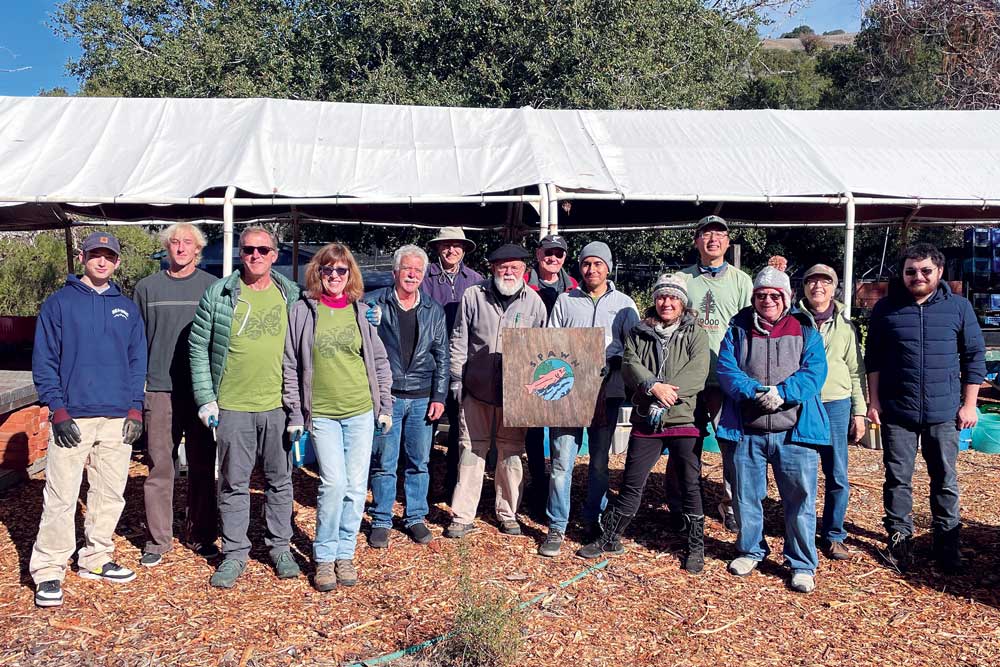
By Audrey Fusco, Nursery Manager and Restoration Ecologist, Salmon Protection and Watershed Network
The SPAWN restoration nursery, seaturtles.org/nursery, grew out of the desire to restore creek habitat for coho salmon by utilizing local genetic stock of native plants that were not available in any nursery. Beginning as a volunteer effort, we sought experts to mentor us on how to collect and grow native seeds and cuttings. Over the past nearly 20 years, we have grown into a professional operation that propagates several thousand plants a year, grows more than 100 native species local to Marin County, and trains others who are interested in restoration.
Along the way we have maintained our grassroots volunteer base that powers the operation with an amazing group of people who enjoy continuous learning and the camaraderie of working to make the world a better place. Initially focusing on riparian (creekside) plants, our focus has expanded to include propagation of plants that benefit pollinators, to support vulnerable insects like monarch butterflies, and to grow long-lived species like redwoods to sequester carbon and mitigate climate disruption. Our educational efforts emphasize the importance of planting natives to support a web of life and a myriad of species, including endangered California freshwater shrimp, red-legged frogs, and migratory birds.
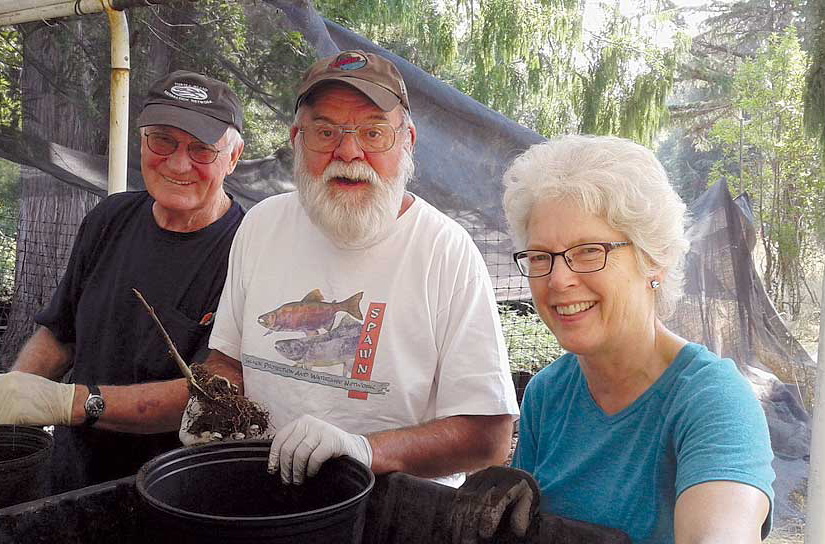
All photos this article by Audrey Fusco of Salmon Protection and Watershed Network
The Early Days
The Salmon Protection and Watershed Network (SPAWN) was established as a project of Turtle Island Restoration Network (TIRN) in 1997, when Todd Steiner, Executive Director of TIRN, discovered migrating coho salmon stuck on the broken apron of a small dam at the former San Geronimo golf course in West Marin County. Steiner garnered community members to push for a solution that would improve the ability for salmon to pass upstream of the dam by utilizing grassroots action. Following the construction of Roy’s Pools on the former San Geronimo golf course, the need for further restoration work and plants to shade the banks following restoration work was obvious, but plants of local ecotype were not widely available. (See: treesfoundation.org/2021/04/from-roys-dam-to-roys-riffles)
SPAWN sought out sources of native plants grown from local genetics for early watershed restoration projects. Initially Circuit Rider, a native plant nursery in Sonoma, would propagate the seeds and cuttings at their nursery and sell the plants back to SPAWN when they were ready for out-planting. Eventually SPAWN decided it would try to start its own nursery. Mel Wright, current volunteer and former nursery manager, describes the origin of the nursery: “When SPAWN started as an organization, it was clear that restoration work was needed to provide better habitat for the salmon. We used to purchase the plants we needed to stabilize the creek banks from local native plant nurseries. We realized that we could grow the plants ourselves with seeds and cuttings gathered from our own watershed. We took it on. We learned a lot over the years. We had a lot of fun with it.”
At the beginning, Mitch and Julie Todd, avid supporters of SPAWN, offered a corner of their backyard in Forest Knolls to get the nursery started. Circuit Rider was recruited to train SPAWN volunteers in how to collect seeds and cuttings. Following a small fundraising campaign, SPAWN purchased a shadehouse and a small greenhouse, and with a small group of enthusiastic volunteers led by Mel Wright, Steve Meyer, Ken Bouley, Dan Mcleod and others, two propagation benches, a greenhouse, a shadehouse, and six tables utilized for housing plants were assembled. Tables were assembled from recycled fence materials.
In the early years, SPAWN provided housing for and received assistance from AmeriCorps members, and volunteer Mel Wright was promoted to the position of Nursery Manager. Paola Bouley, former Watershed Biologist with SPAWN, was instrumental in implementing the vision for the nursery, which had been created by Steiner and SPAWN community members. Volunteers came together each Friday to work in the nursery. Volunteer sessions often extended beyond work hours and were followed by social gatherings, field trips, and other learning opportunities.
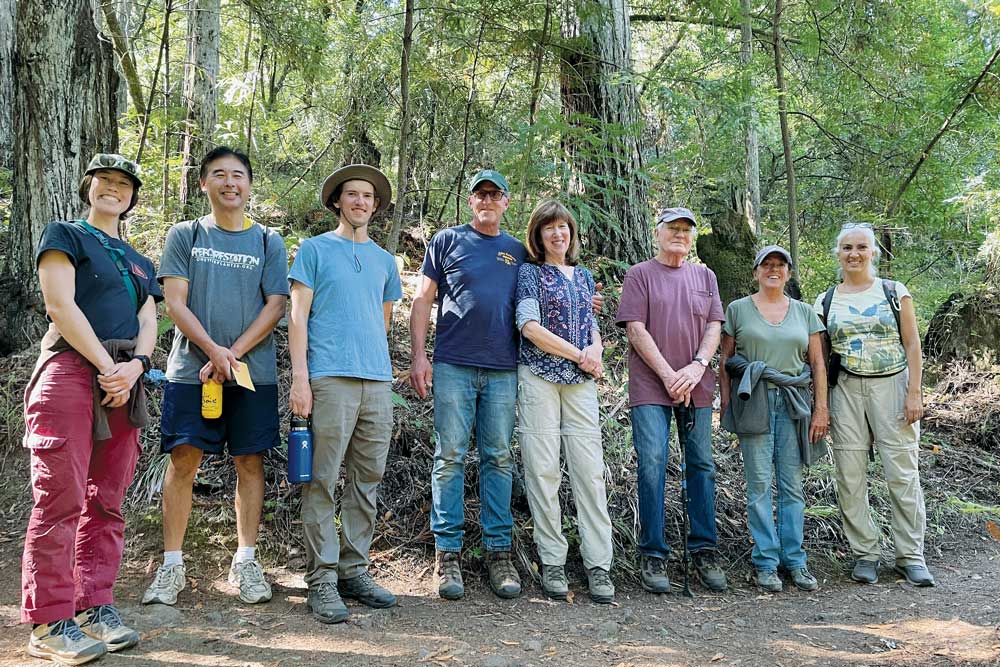
Early Volunteer Experiences
During the first decade the nursery volunteer group successfully grew dozens of species of native plants, which were used in salmon habitat restoration projects, including creek enhancement projects on private property in the San Geronimo Valley, road repair work to reduce sedimentation into tributaries, plantings along the creek on the former San Geronimo golf course, and plantings on public park land. SPAWN also worked with programs that included biological salmon monitoring, fighting unfettered development along streams, leading creek walks, installing roof catchment and raingardens to promote water conservation, and providing consultations to promote habitat protection for landowners.
Long-time volunteer Nancy Hanson recalls the planting projects during the early days of volunteer-led restoration efforts: “Nearly 20 years ago volunteers planted trees and shrubs into the rocky riprap banks on Woodacre Creek. We took out some invasives and also planted trees and smaller low bank plants. The creek is totally shaded there now with alders, maples, and creek dogwoods. The area looks lovely today.”
Many of the SPAWN nursery and restoration volunteers took what they learned through volunteering and applied their knowledge of native plants to their own backyards. Bill Teufel, who has volunteered with the nursery since 2007, explains, “I, like all the nursery volunteers, enjoy working with other native plant-loving folks but equally enjoy taking what I have learned in my years of volunteering and applying it to my one-acre wooded home property in San Geronimo. I now find myself surrounded by a native plant woodland garden instead of a sea of Himalayan blackberry and English ivy.”
Recent and Current Projects
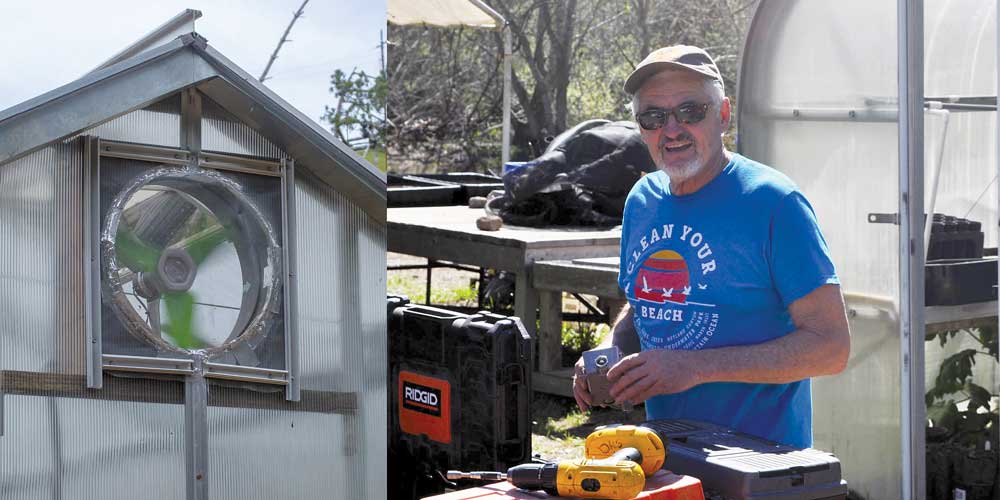
The nursery moved to its present location on Golden Gate National Recreation Area land near Olema, CA, at the site of the Turtle Island Restoration Network headquarters, in 2008 and has organically grown in sophistication each year as SPAWN has grown in scope and size. Audrey Fusco was hired to manage the nursery in 2016. Over the past 7 years SPAWN completed more than 15 acres of habitat restoration work thanks to large-scale projects funded by California Department of Fish and Wildlife Fisheries Restoration Grant Program, California State Water Board, NOAA National Marine Fisheries Service Restoration Center, and the members and volunteers of Turtle Island Restoration Network (SPAWN’s parent organization).
Nursery infrastructure has been upgraded, and present infrastructure includes tables throughout the nursery to house plants, cages throughout the shadehouses to protect seedlings from rodents, storage racks for clean pots, an enlarged bin to store fresh soil, a solar-fan to cool the greenhouse, a solar oven used to sterilize pots, and other innovations. Much of the labor and materials for the nursery upgrades were donated to the nursery by volunteers and interns. We utilize recycled materials as often
as possible.
Plants grown by the nursery are utilized for a wide variety of purposes and are planted in small and large-scale riparian restoration projects, school gardens, and home gardens. SPAWN has initiated many new programs, including school propagation programs (seaturtles.org/spawn-education), a Tropical Milkweed Trade-out/Native Milkweed Give-Away program (tinyurl.com/tropicalmilkweed), and 10,000 Redwoods (seaturtles.org/10000-redwoods). Additionally, since 2020 we have collaborated with Home Ground Habitats Nursery (www.homegroundhabitats.org)on a school garden program called Bringing Nature to School (tinyurl.com/naturetoschool). We assist local homeowners who want to restore their land by planting natives and have made plants available to our partner agencies restoring habitat in the Lagunitas Watershed. We often invite groups to see what we have created, and we are always willing to share our expertise. We continue to develop new educational materials to share with others.
SPAWN Nursery is a place where people come together to learn how to grow native plants and restore land to create habitat for wildlife. Volunteers still meet each Friday to propagate plants and maintain the nursery. We often meet for activities such as bird walks prior to nursery volunteer events, celebrate birthdays within the community, and eat lunch together each Friday. The nursery is a unique community-based project that depends on the support of hundreds of volunteers, interns, and students who contribute their time and energy to the propagation and care of native plants. The volunteer community provides our foundation of support for taking action to rebuild beneficial habitat for wildlife in the Lagunitas Creek watershed and the greater Marin County area.
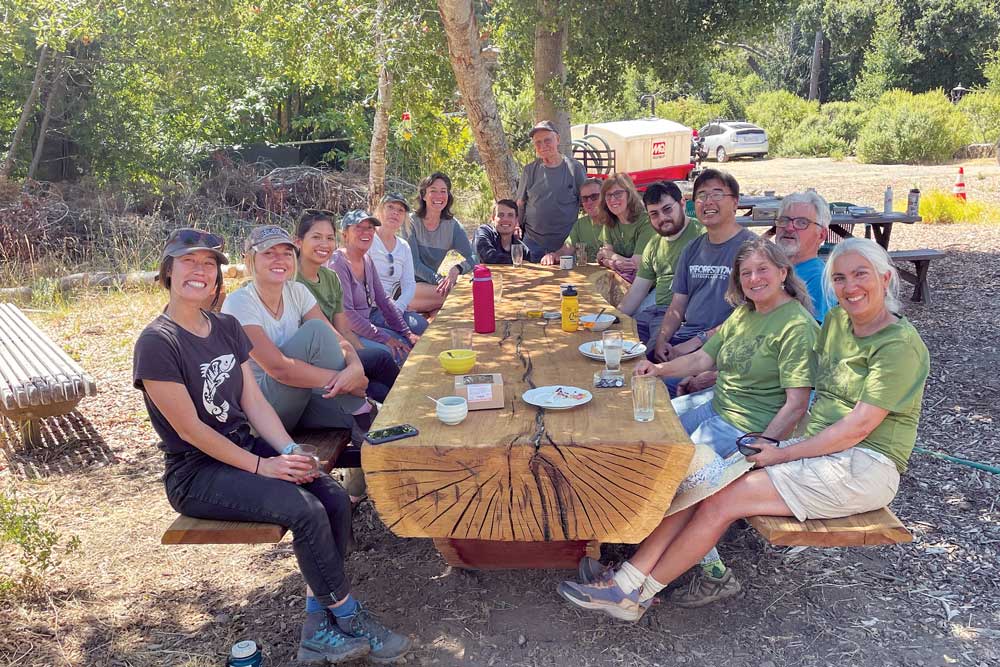
Lessons Learned
- Where there is a will there is a way. Don’t let a lack of dedicated resources stop you from getting the ball rolling. Building a diverse and vibrant community attracts resources that may extend beyond your immediate imagination. Do the work and the resources will come!
- Find experts to mentor your group. Plant-loving people are some of the most generous people on Earth and are usually willing to share their knowledge.
- Make it fun! Work becomes play when you put together the right group of people who want to help make their communities a healthier place. Don’t forget to include food—everyone loves a potluck.
- Empower volunteers. Most people rise to the occasion if you encourage them. Don’t be afraid to ask for their ideas and help. Before long they not only become the experts, they help find and provide the resources to take operations to a higher level.
For more information: seaturtles.org/spawn
